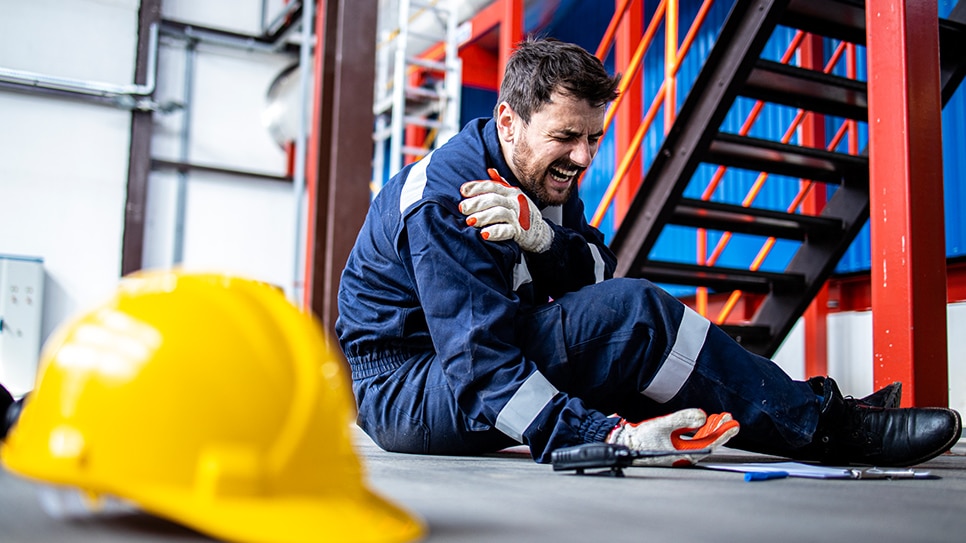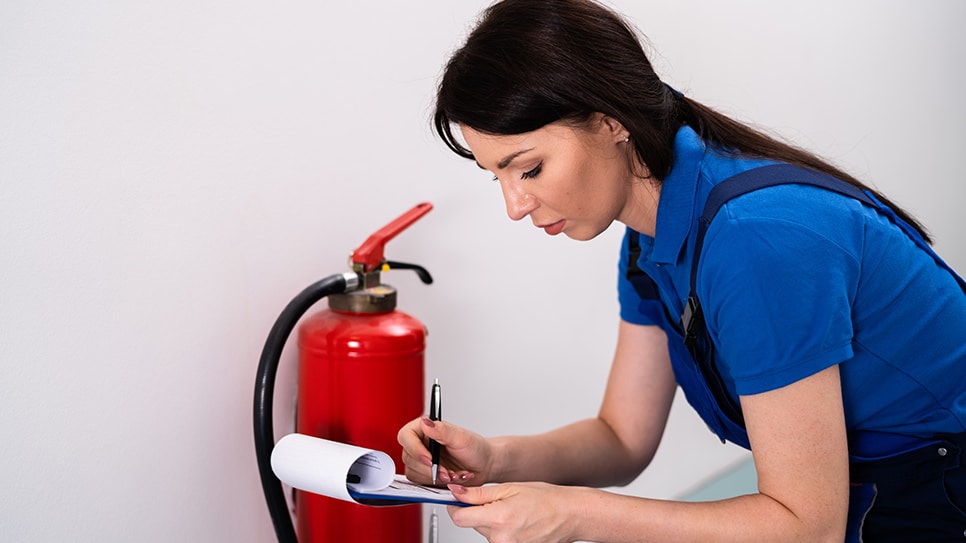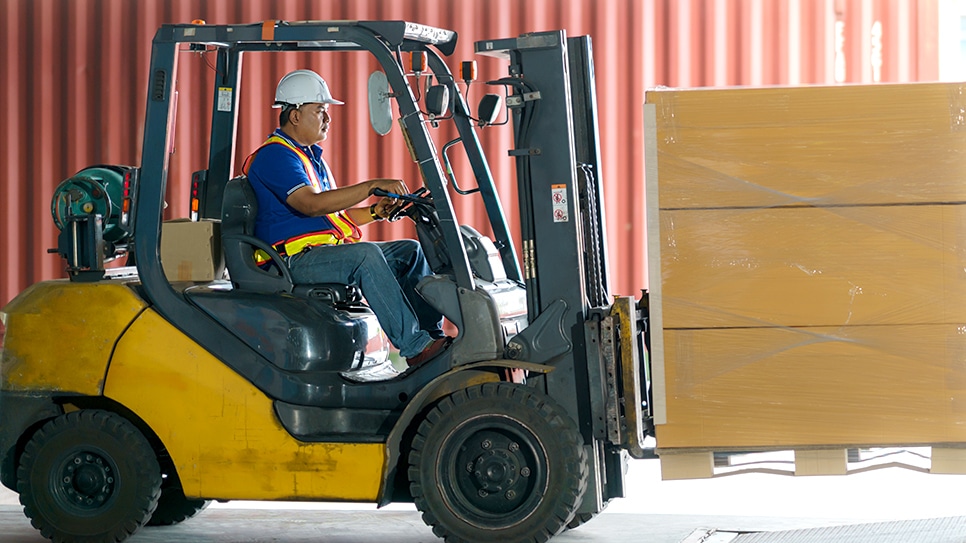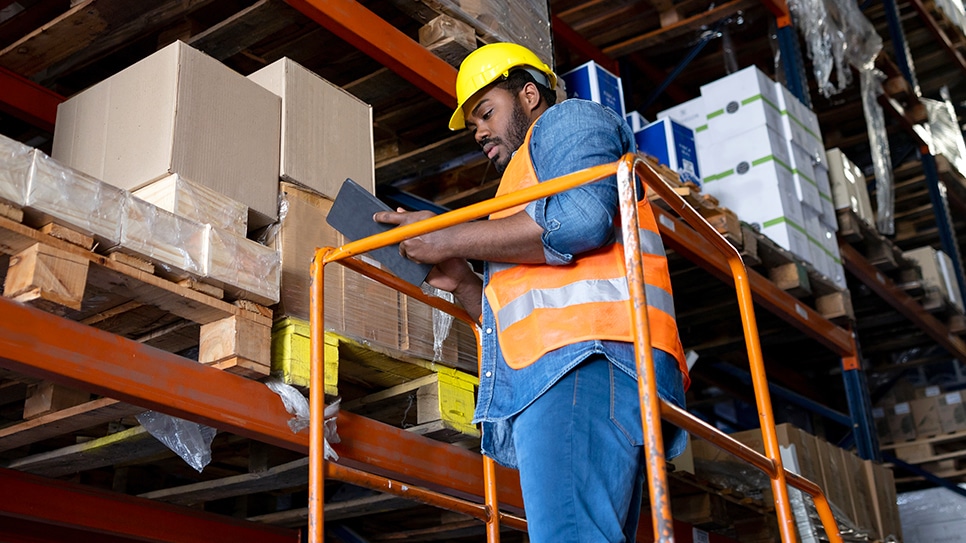
Fall Protection
Educating employees on the risks of working at heights and how to protect themselves from falls is essential to ensuring worker safety and complying with federal requirements.
Course description
Traliant’s Fall Protection training is a 30-minute course that helps workers identify fall hazards in the workplace, recognize when they’re at risk of falling and how to eliminate, prevent or control falls.
This course aligns with the Occupational Safety and Health Administration’s (OSHA) general industry regulations on fall prevention, ladder safety and fall hazard awareness.
ONLINE TRAINING
Fall Protection
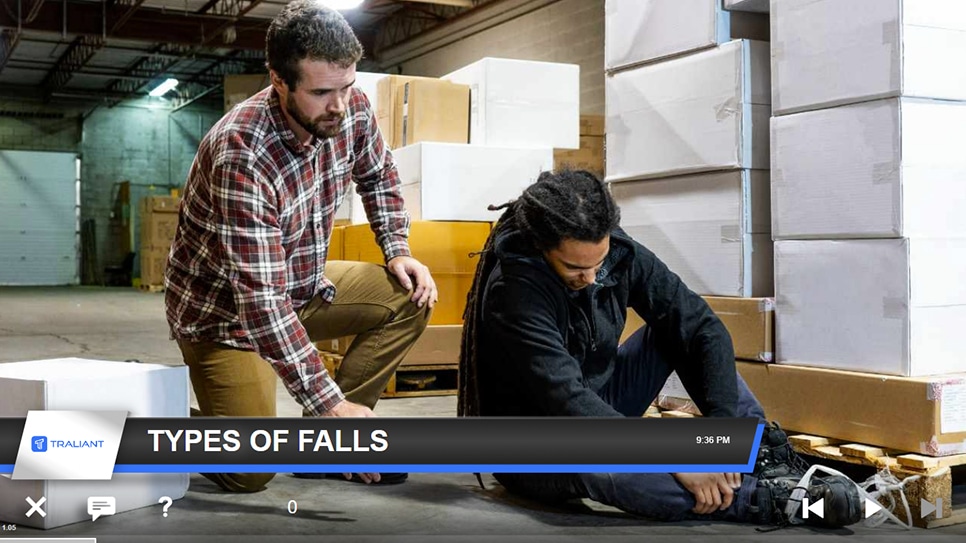
Fall Protection covers these topics and more:
- Types of fall hazards
- Ladder fall protection
- Common fall prevention methods and systems
- Personal Fall Arrest Systems (PFAS)
KEY FEATURES
Why you'll love our training
It’s time to embrace a new era of online training with a valued partner who will ensure seamless implementation, along with a learning experience your employees will truly enjoy.
Course administration
Traliant makes it simple to roll out training to your workplace and provide technical support directly to your employees at no additional cost.
Course customizations
Tailor courses to include your logo, relevant policies, workplace images, and more. Traliant can even customize the course with scenarios that take place in your own workplace environment.
Translations
Training is available in English, Spanish and is supported in over 100 languages.
What to consider when choosing the most effective fall protection training
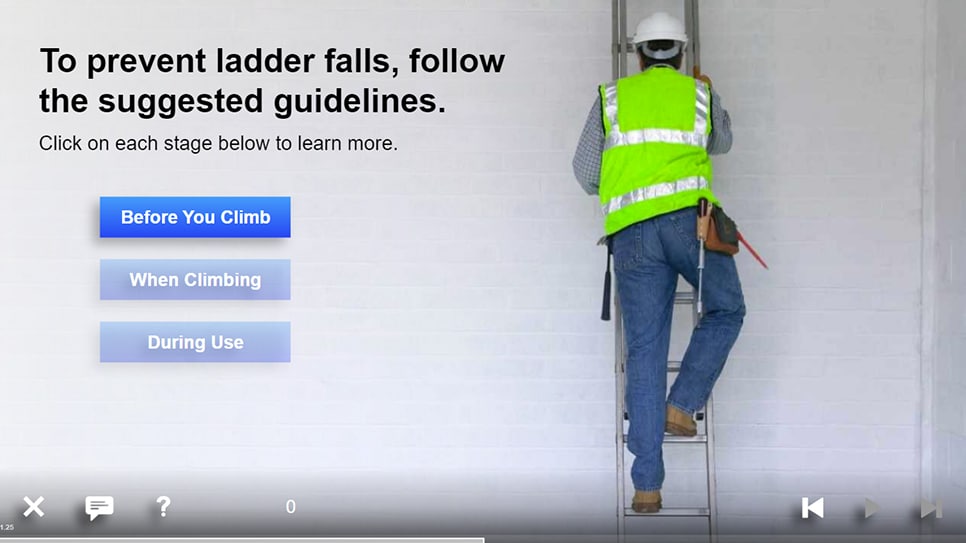
- Prevent falls: Falls from heights are a leading cause of serious workplace injuries and fatalities. Training can help to reduce the risk of falls by teaching employees how to identify and avoid fall hazards, how to use fall protection equipment, and how to work safely at heights.
- Comply with OSHA regulations: The Occupational Safety and Health Administration (OSHA) has strict regulations regarding fall protection. Training helps organizations meet these legal requirements and to avoid costly fines and penalties.
- Create a culture of safety: Training helps to create a workplace where safety is a top priority and employees feel empowered to speak up about safety concerns.
- Empower employees: Training provides employees with the knowledge and skills they need to make informed decisions about their safety when working at heights.
- Strengthen your organization's commitment to safety: Training demonstrates the company's commitment to providing a safe working environment and to protecting the health of its employees.
- Reduce the risk of accidents and injuries: When employees are aware of fall hazards and know how to use fall protection equipment properly, they are less likely to be injured.
- Unprotected edges: Open sides of roofs, floors, platforms, or other elevated work surfaces.
- Holes and openings: Openings in floors, walls, or roofs.
- Ladders and scaffolding: Improperly set up or used ladders and scaffolding can be unstable and lead to falls.
- Elevated work platforms: Aerial lifts, scissor lifts, and other elevated work platforms can pose a fall risk if not used properly.
- Guardrails: Guardrails provide a physical barrier to prevent falls from unprotected edges.
- Safety nets: Safety nets can catch workers who fall from heights.
- Personal fall arrest systems (PFAS): PFAS consist of a harness, lanyard, and anchor point. They are designed to stop a worker's fall and prevent them from hitting the ground.
- Inspect equipment regularly: Fall protection equipment should be inspected regularly for wear and tear.
- Follow manufacturer's instructions: Always follow the manufacturer's instructions for using and maintaining fall protection equipment.
- Train employees properly: Make sure that all employees who work at heights receive proper training on fall protection.
- Plan ahead: Before starting work at heights, take the time to assess the risks and to plan for appropriate fall protection measures.



